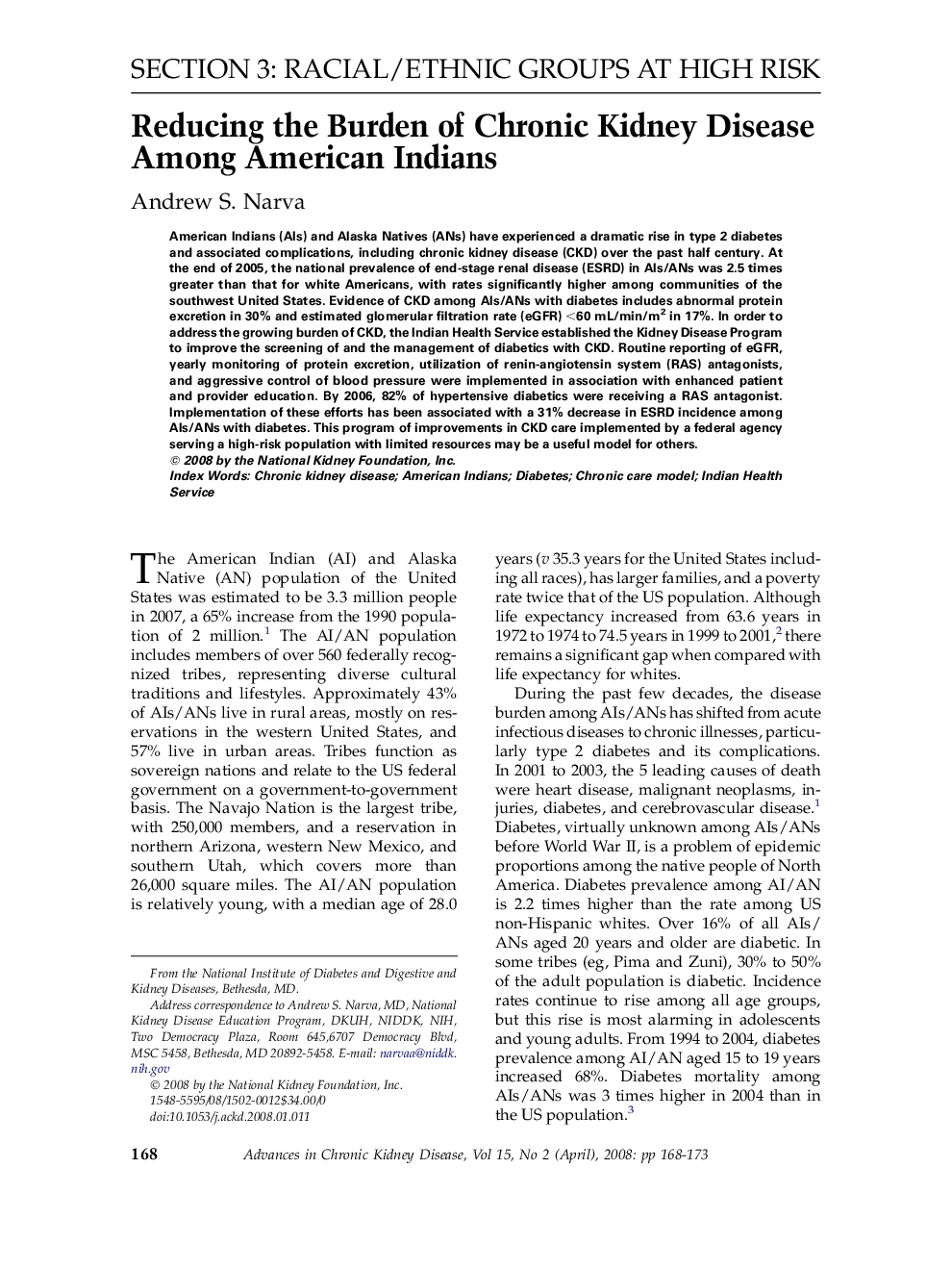| Article ID | Journal | Published Year | Pages | File Type |
|---|---|---|---|---|
| 3846752 | Advances in Chronic Kidney Disease | 2008 | 6 Pages |
Abstract
American Indians (AIs) and Alaska Natives (ANs) have experienced a dramatic rise in type 2 diabetes and associated complications, including chronic kidney disease (CKD) over the past half century. At the end of 2005, the national prevalence of end-stage renal disease (ESRD) in AIs/ANs was 2.5 times greater than that for white Americans, with rates significantly higher among communities of the southwest United States. Evidence of CKD among AIs/ANs with diabetes includes abnormal protein excretion in 30% and estimated glomerular filtration rate (eGFR) <60 mL/min/m2 in 17%. In order to address the growing burden of CKD, the Indian Health Service established the Kidney Disease Program to improve the screening of and the management of diabetics with CKD. Routine reporting of eGFR, yearly monitoring of protein excretion, utilization of renin-angiotensin system (RAS) antagonists, and aggressive control of blood pressure were implemented in association with enhanced patient and provider education. By 2006, 82% of hypertensive diabetics were receiving a RAS antagonist. Implementation of these efforts has been associated with a 31% decrease in ESRD incidence among AIs/ANs with diabetes. This program of improvements in CKD care implemented by a federal agency serving a high-risk population with limited resources may be a useful model for others.
Related Topics
Health Sciences
Medicine and Dentistry
Nephrology
Authors
Andrew S. Narva,
